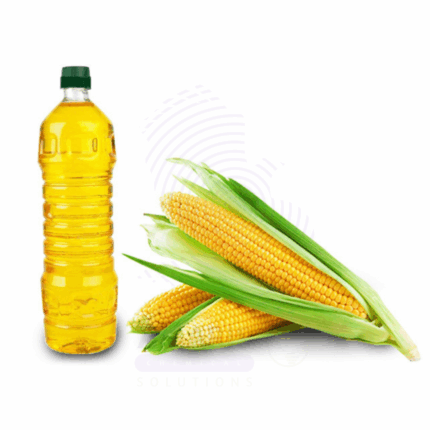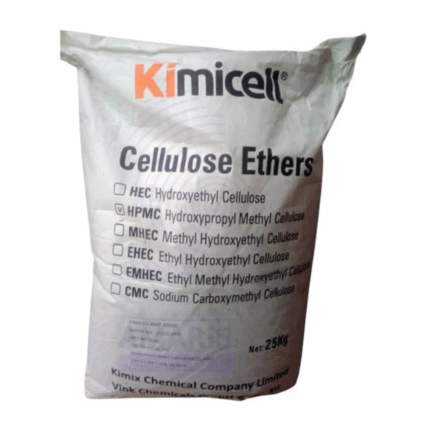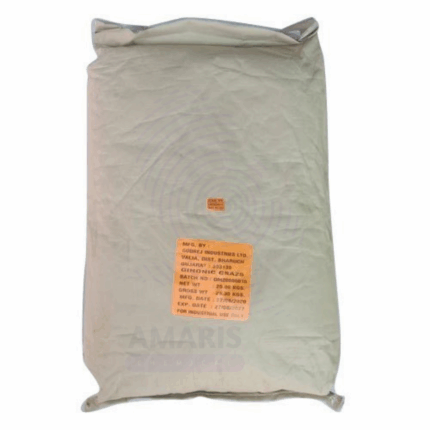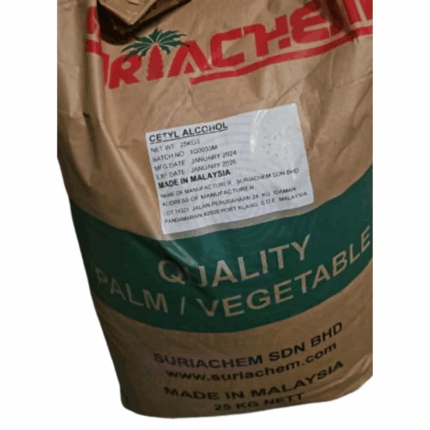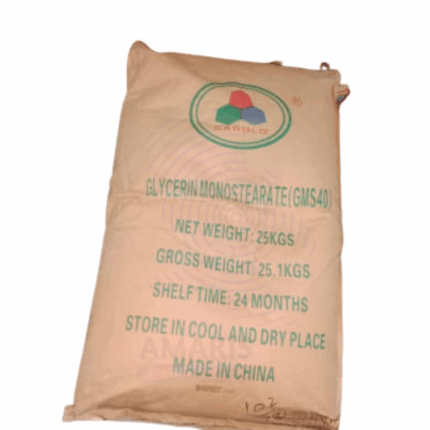“Carnauba Wax Prime Yellow” has been added to your cart. View cart
Cognac Green Oil
Whatsapp Order
Cognac Green Oil is an essential oil distilled from the lees (fermented residue) of wine production, specifically from the Vitis vinifera (grapevine) species used in Cognac manufacturing. This oil carries a fruity, dry, slightly fermented aroma with green and woody undertones. Its scent is highly prized in fine perfumery and niche cosmetic formulations due to its top-note brightness and subtle complexity.
Beyond perfumery, Cognac Green Oil is used in gourmet food flavoring (in food-grade form), aromatherapy blends, and artisanal products. With its natural origin and distinct organoleptic profile, it offers both aromatic elegance and versatility in applications.
Description
Table of Contents
Toggle
Cognac Green Oil
Primary Uses
- Fragrance and Perfumery
- Used as a top or middle note in high-end perfumes and natural colognes
- Enhances green, fruity, and fermented accords in fine fragrance compositions
- Blended with florals, citrus, or wood oils to add complexity and brightness
- Cosmetics and Personal Care
- Included in grooming products, body sprays, and solid colognes for a fresh, fermented scent
- Used in artisanal creams, serums, or beard oils for sensory appeal
- Added to natural deodorants and soaps for its aromatic impact
- Food and Beverage Industry (food-grade only)
- Used in flavoring gourmet syrups, beverages, and liqueur-inspired desserts
- Adds a subtle fermented grape note to flavor compositions
Secondary Uses
- Aromatherapy and Wellness
- Used in diffuser blends to evoke an elevated, luxurious atmosphere
- Incorporated in relaxation or indulgence-themed aromatherapy profiles
- Household and Artisan Products
- Used in handmade candles, wax melts, and room sprays for its unique, green-fruity aroma
- Included in upscale air fresheners with vineyard or wine themes
KEY PRODUCT FEATURES
1. Basic Identification Attributes
- Botanical Source: Vitis vinifera
- Common/Trade Name: Cognac Green Oil
- INCI Name: Vitis Vinifera (Grape) Leaf Oil
- CAS Number: 8016-21-5
- HS Code: 3301.29
- Synonyms: Green Cognac Oil, Grape Leaf Essential Oil
2. Physical & Chemical Properties
- Physical State: Liquid essential oil
- Color & Odor: Pale green to yellow; fruity, fermented, dry, wine-like aroma
- Solubility: Insoluble in water; soluble in alcohol and fixed oils
- Refractive Index: 1.427 – 1.429
- Specific Gravity: 0.864 – 0.870
- Main Components: Ethyl esters, cis-3-hexenol, isoamyl alcohol, hexyl acetate
3. Safety & Hazard Attributes
- GHS Classification: Flammable liquid and vapor
- Toxicity: Low when diluted and used within recommended concentrations
- Exposure Limits: Use according to IFRA safety limits
- Allergen Information: Contains natural fragrance allergens (e.g., esters, alcohols)
4. Storage & Handling Attributes
- Storage Conditions: Store in a cool, dry, and well-ventilated space away from direct sunlight
- Container Type: Amber glass bottles or lined metal drums
- Shelf Life: 24 months under optimal storage conditions
- Handling Precautions: Use clean utensils; keep containers sealed after use
5. Regulatory & Compliance Attributes
- Complies with IFRA guidelines for fragrance usage
- Must meet food-grade standards for use in consumables
- Manufactured in GMP-compliant, ISO-certified facilities
- Not approved for pharmaceutical ingestion
6. Environmental & Health Impact
- Biodegradability: Biodegradable under standard environmental conditions
- Ecotoxicity: Low toxicity at normal dilution levels
- Bioaccumulation: Not expected under responsible use
SAFETY HANDLING PRECAUTIONS
Safety Handling Precautions
- PPE Required: Gloves and goggles recommended during bulk handling
- Handling Guidelines: Do not apply undiluted on skin; use in well-ventilated areas
First Aid Measures
- Inhalation: Move to fresh air; consult physician if discomfort continues
- Skin Contact: Wash area with soap and water; stop use if irritation occurs
- Eye Contact: Rinse with water for several minutes; seek medical advice if needed
- Ingestion: Rinse mouth; do not induce vomiting; seek immediate medical help
Firefighting Measures
- Fire Hazards: Flammable; keep away from ignition sources
- Extinguishing Media: Use foam, dry chemical, or carbon dioxide
- Special Precautions: Wear protective gear; vapors may be harmful in enclosed areas
- Hazardous Combustion Products: Carbon monoxide, carbon dioxide, volatile aromatics
Related products
Cellulose Ether
Cellulose ether refers to a group of chemically modified cellulose derivatives where hydroxyl groups on the cellulose backbone are substituted with ether groups such as methyl, hydroxyethyl, or carboxymethyl groups. These modifications improve solubility, viscosity, and film-forming properties while maintaining biodegradability and non-toxicity. Cellulose ethers are white to off-white powders or granules that dissolve in water to form viscous, stable solutions. They are widely used as thickeners, binders, stabilizers, and film formers in industries such as construction, pharmaceuticals, cosmetics, food, and paper.
Ceteareth 20 Ginonic CSA 20
Ceteareth 20 Ginonic CSA 20 is a nonionic surfactant and emulsifier derived from the ethoxylation of cetearyl alcohol, incorporating approximately 20 ethylene oxide units per molecule. It appears as a white to off-white waxy solid or viscous liquid, depending on temperature and formulation. This emulsifier is widely used in cosmetic, pharmaceutical, and industrial formulations for its excellent ability to stabilize oil-in-water emulsions, improve texture, and enhance the sensory properties of finished products. Its high hydrophilic-lipophilic balance (HLB) makes it especially effective in forming stable emulsions and solubilizing lipophilic ingredients in aqueous phases. Ceteareth 20 is valued for its mildness, broad compatibility, and multifunctional performance.
Ceto Stearyl Alcohol 1618TA ex VVF
Ceto Stearyl Alcohol 1618TA ex VVF is a premium-grade blend of cetyl (C16) and stearyl (C18) fatty alcohols, produced with high purity and consistent quality by VVF Ltd. This waxy solid is typically supplied as white to off-white flakes or pastilles with a mild fatty odor. Known for its excellent emulsifying, thickening, and emollient properties, it is widely utilized in cosmetics, pharmaceuticals, and industrial formulations. This specific grade from VVF is prized for its uniform particle size, high melting point, and superior performance in enhancing product texture, stability, and skin conditioning effects.
Cetyl Alcohol
Cetyl Alcohol, also known as 1-Hexadecanol or Palmityl Alcohol, is a fatty alcohol derived primarily from natural sources such as palm oil and coconut oil. It appears as a waxy, white to pale yellow solid with a faint fatty odor. Cetyl Alcohol is widely used in cosmetic, pharmaceutical, and industrial formulations due to its emollient, emulsifying, thickening, and stabilizing properties. It helps improve texture, consistency, and moisturizing effects in personal care products. Cetyl Alcohol is compatible with many ingredients, making it a versatile multifunctional ingredient.
Dimethicone Silicon Oil
Dimethicone Silicon Oil, also known as polydimethylsiloxane (PDMS) or silicone oil, is a clear, odorless, and non-volatile silicone-based polymer widely used for its lubricating, anti-foaming, water-repellent, and skin-conditioning properties. It is a linear silicone polymer composed of repeating dimethylsiloxane units. Dimethicone exhibits excellent thermal stability, chemical inertness, and low surface tension, making it highly versatile in pharmaceutical, cosmetic, personal care, industrial, and food applications. It is available in various viscosities, from very low to high viscosity oils, enabling tailored formulations.
Glycerol Monostearate Powder
Glycerol Monostearate Powder is a white to off-white, free-flowing powder composed of 50% monoglycerides of stearic and palmitic acids, typically derived from vegetable oils. It is a non-ionic emulsifier widely used in food, cosmetics, pharmaceuticals, plastics, and industrial applications. GMS functions as an emulsifying agent, stabilizer, thickener, anti-staling agent, and opacifier. In food, it improves texture and extends shelf life. In cosmetics and pharmaceuticals, it enhances creaminess and stability. GMS 50% is often blended with other emulsifiers or surfactants and is valued for its versatile functionality, safety, and compatibility with a wide range of ingredients.
Hycryl
Hycryl is a specialized acrylic copolymer resin designed primarily for industrial and cosmetic applications. It appears as a white to off-white powder or granules with excellent film-forming, adhesive, and thickening properties. Known for its compatibility with a wide range of solvents and plasticizers, Hycryl 77 provides excellent clarity, flexibility, and durability in coatings, adhesives, and personal care formulations. Its balanced molecular weight and functional groups enable it to deliver strong binding and aesthetic properties in both aqueous and solvent-based systems.
Hydroxyethyl Cellulose
Hydroxyethyl Cellulose , marketed under brand names such as Natrosol, is a non-ionic, water-soluble polymer derived from cellulose by reacting alkali cellulose with ethylene oxide. It appears as a white to off-white, free-flowing powder with excellent thickening, binding, and film-forming properties. HEC is widely used as a rheology modifier and stabilizer due to its high water retention, solubility, and compatibility with a broad range of ingredients. It is valued in many industries including cosmetics, pharmaceuticals, paints, adhesives, and personal care products.


 Preservatives(food)
Preservatives(food) Flavor Enhancers
Flavor Enhancers Acidulants
Acidulants Sweeteners
Sweeteners Antioxidants
Antioxidants Colorants(food)
Colorants(food) Nutraceutical Ingredients (food)
Nutraceutical Ingredients (food) Nutrient Supplements
Nutrient Supplements Emulsifiers
Emulsifiers
 Collectors
Collectors Dust Suppressants
Dust Suppressants Explosives and Blasting Agents
Explosives and Blasting Agents Flocculants and Coagulants
Flocculants and Coagulants Frothers
Frothers Leaching Agents
Leaching Agents pH Modifiers
pH Modifiers Precious Metal Extraction Agents
Precious Metal Extraction Agents
 Antioxidants(plastic)
Antioxidants(plastic) Colorants (Pigments, Dyes)
Colorants (Pigments, Dyes) Fillers and Reinforcements
Fillers and Reinforcements Flame Retardants
Flame Retardants Monomers
Monomers Plasticizers
Plasticizers Polymerization Initiators
Polymerization Initiators Stabilizers (UV, Heat)
Stabilizers (UV, Heat)
 Antifoaming Agents
Antifoaming Agents Chelating Agents
Chelating Agents Coagulants and Flocculants
Coagulants and Flocculants Corrosion Inhibitors
Corrosion Inhibitors Disinfectants and Biocides
Disinfectants and Biocides Oxidizing Agents
Oxidizing Agents pH Adjusters
pH Adjusters Scale Inhibitors( water)
Scale Inhibitors( water)
 Antioxidants(cosmetic)
Antioxidants(cosmetic) Emollients
Emollients Fragrances and Essential Oils
Fragrances and Essential Oils Humectants
Humectants Preservatives
Preservatives Surfactants(cosmetic)
Surfactants(cosmetic) Thickeners
Thickeners UV Filters
UV Filters
 Fertilizers
Fertilizers Soil Conditioners
Soil Conditioners Plant Growth Regulators
Plant Growth Regulators Animal Feed Additives
Animal Feed Additives Biostimulants
Biostimulants Pesticides (Herbicides, Insecticides, Fungicides)
Pesticides (Herbicides, Insecticides, Fungicides)
 Active Pharmaceutical Ingredients (APIs)
Active Pharmaceutical Ingredients (APIs) Excipients
Excipients Solvents(pharmaceutical)
Solvents(pharmaceutical) Antibiotics
Antibiotics Antiseptics and Disinfectants
Antiseptics and Disinfectants Vaccine Adjuvants
Vaccine Adjuvants Nutraceutical Ingredients (pharmaceutical)
Nutraceutical Ingredients (pharmaceutical) Analgesics & Antipyretics
Analgesics & Antipyretics
 Analytical Reagents
Analytical Reagents Solvents(lab)
Solvents(lab) Chromatography Chemicals
Chromatography Chemicals Spectroscopy Reagents
Spectroscopy Reagents microbiology-and-cell-culture-reagents
microbiology-and-cell-culture-reagents Molecular Biology Reagents
Molecular Biology Reagents Biochemical Reagents
Biochemical Reagents Inorganic and Organic Standards
Inorganic and Organic Standards Laboratory Safety Chemicals
Laboratory Safety Chemicals Specialty Laboratory Chemicals(Special Laboratory Equipment)
Specialty Laboratory Chemicals(Special Laboratory Equipment)
 Demulsifiers
Demulsifiers Hydraulic Fracturing Fluids
Hydraulic Fracturing Fluids Scale Inhibitors(oil)
Scale Inhibitors(oil) Surfactants(oil)
Surfactants(oil) Drilling Fluids
Drilling Fluids
 Dyes and Pigments
Dyes and Pigments Bleaching Agents
Bleaching Agents Softening Agents
Softening Agents Finishing Agents
Finishing Agents Antistatic Agents
Antistatic Agents
 Admixtures
Admixtures Waterproofing Agents
Waterproofing Agents Sealants and Adhesives
Sealants and Adhesives Curing Compounds
Curing Compounds Concrete Repair Chemicals
Concrete Repair Chemicals Anti-Corrosion Coatings
Anti-Corrosion Coatings
 Surfactants(cleaning)
Surfactants(cleaning) Builders
Builders Enzymes
Enzymes Solvents (Cleaning)
Solvents (Cleaning) Fragrances
Fragrances
 Electronic Chemicals
Electronic Chemicals Catalysts
Catalysts Lubricants
Lubricants Photographic Chemicals
Photographic Chemicals Refrigerants
Refrigerants Automotive chemicals
Automotive chemicals Pyrotechnic Chemicals
Pyrotechnic Chemicals
 Biodegradable Surfactants
Biodegradable Surfactants Bio-based Solvents
Bio-based Solvents Renewable Polymers
Renewable Polymers Carbon Capture Chemicals
Carbon Capture Chemicals Wastewater Treatment Chemicals
Wastewater Treatment Chemicals
 Pigments
Pigments Solvents(paint)
Solvents(paint) Specialty Coatings
Specialty Coatings Binders/Resins
Binders/Resins Additives
Additives Driers
Driers Anti-Corrosion Agents
Anti-Corrosion Agents Functional Coatings
Functional Coatings Application-Specific Coatings
Application-Specific Coatings
 Fresh Herbs
Fresh Herbs Ground Spices
Ground Spices Whole Spices
Whole Spices Spice Blends
Spice Blends Dried Herbs
Dried Herbs
 Leavening Agents
Leavening Agents Dough Conditioners
Dough Conditioners Flour Treatments
Flour Treatments Fat Replacers
Fat Replacers Decoratives
Decoratives Preservatives(baking)
Preservatives(baking)
 Plasticizers & Softeners
Plasticizers & Softeners Reinforcing Agents
Reinforcing Agents Adhesion Promoters
Adhesion Promoters Vulcanizing Agents
Vulcanizing Agents Antidegradants
Antidegradants Blowing Agents
Blowing Agents Fillers & Extenders
Fillers & Extenders Accelerators & Retarders
Accelerators & Retarders

